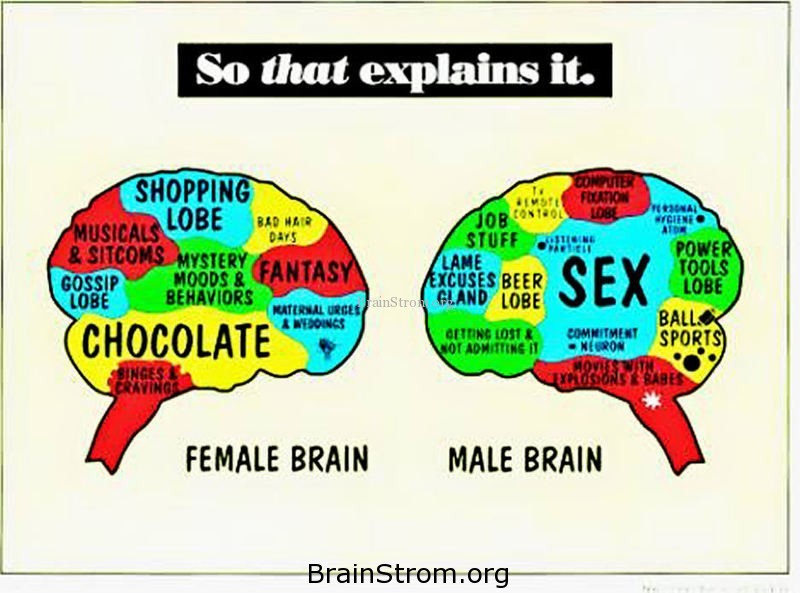Traveling abroad this summer? These helpful phrases will open doors and help you gain immediate acceptance.
You don’t need to be fluent in the language of the country that you are traveling to, but learning some key phrases makes a great impression. If someone hears that you’re trying to speak the language, they will give you their respect and help.
From saying hello to asking how much something cost; knowing some important phrases will set you up for an amazing trip. Its also a great way to meet and connect with people, you can find a secret spot that only the locals know or the best place to eat in town.
Your pronunciation doesn’t have to be perfect, all that matters is that your trying and that means a lot the locals. Also it’s a great way to impress your friends when you start speaking the language of the country your in, works everytime!
Here are some helpful phrases in 5 common languages to know when traveling in Europe
French, Italian, Spanish, German and Dutch
FRENCH
The Basics:
Hello: bonjour (bohn-zhoor)
Please: S’il vous plaît (see voo play)
Thank you: merci (mehr-see)
Goodbye: au revoir (oh reh-vwar)
Where is the bathroom? pardon, où sont les toilettes? (oo sohn lay twah-leht)
Do you have a menu in English? avez –vous un menu en anglais? (ah-vay vooz uhn men-u ahn ahn-glay)
How much is it? combien est-il (kohn-bee-an es-eel)
I’m lost, can you help me find ____? Je suis perdu, peux vous m’aider à trouver? (zhuh swee pehr-dew puh vooz- may-day ah tru-vay)
I would like: Je voudrais (zhuh voo-dray)
I am sorry, I don’t speak French: Je suis désolé, je ne parle pas français (zhuh swee day-zoh-lay , zhuh nuh parl pah frahn-say)
Some Phrases Just for Fun:
I drank too much, can you call a taxi? J’ai bu trop, pouvez-vous appeler un taxi (zhay boo tro-op, poo-vay voo ah-puh-lay uhn tahk-see)
Can I climb the Eiffel tower? Est-ce que je peux monter la Tour Eiffel? (ehs-ce kuh zhuh puh mon-teh la toor ee-fel)
How’s my breath? Comment tu trouves mon haleine? (kon-mahn tew troo-vay mohn ah-lehn)
Some French Etiquette to Know:
Never say: Jokes are not appreciated in French culture. Intelligent conversation or funny real-life stories are appreciated.
Inappropriate gesture: Do not slap your open palm over a closed fist (this is considered a vulgar gesture).
Never do: Do not bring up money or religion. Do not use someone’s first name until you are invited to do so.
French custom: Instead of a 3-course meal that Americans are used to, the French traditionally serve 6 courses. In order, they are hors d’ oeuvres, fish course, meat course, salad, cheese plate, and dessert. Bread and wine are also staples that are always on the table.
ITALIAN
The Basics:
Hello: Buongiorno (bwon-jor-no)
Thank you: Grazie (gra-tyse)
Please: Per favore (per fa-vo-re)
Goodbye: arrivederci (a-ree-ve-der-chee)
Where are the toilets? dove sono I gabinetti? (do-ve so-no ee ga-bee-ne-tee)
Do you have a menu in English? Avete un menu in inglese?
How much is it? Quantè (kwan-te)
I’m lost! Could you help me, please? Mi sono perso/a! Mi può aiutare, per favore? (mee so-no per-so/a! mee pwo ai-yoo-ta-re per fa-vo-re)
I’d like to buy___: Vorrei comprare__ (vo-ray kom-pra-re__)
I am sorry, I don’t speak Italian: Mi dispiace, non parlo italiano (mee dees-pya-che, non par-lo ay-tal-lee-on-o)
Drinking Toast: Salute! (to your health!) (sa-loo-te)
Some Phrases Just for Fun:
Can you lower the price? Può farmi lo sconto? (pwo far-mee lo skon-to)
Where would you go for a cheap meal? Dove andrebbe per un pasto economico (do-ve an-dre-be per oon pas-to e-ko-no-me-ko)
I’d like the wine list: Vorrei la lista del vini (vo-ray la lee-sta day vee-nee
Some Italian Etiquette to Know:
Never say: Do not call someone by their first name until they invite you to do so. Use their title and last name.
Inappropriate gesture: Stroking your fingers under your chin and thrusting them forward is a sign of defiance
Never do: Never talk about politics, taxes, religion/The Vatican, the Mafia, World War II, private or personal matters (income, family matters, occupation)
Italian Custom: Italians take part in something called La Passeggiata daily. This ritual consists of a stroll around the town at about 6:00 p.m. The purpose of this ritual is to see and be seen by other people and catch up with friends before dinner.
SPANISH
The Basics:
Hello: Hola (oh-lah)
Please: por favor (por-fa-bor)
Thank you: Gracias (grah-thee-ahs)
Goodbye: adios (ah-dee-ohs)
Where are the toilets? ¿dónde están los servicios? (dohn-day ay-stahn lohs sehr-bee-thee-ohs)
I would like a menu in English? ¿Me gustaría la carta en inglés? (meh goo-stah-ree-ah lah kar-tah ayn een-glays)
How much is it? ¿cuánto cuesta? (kwahn-toh kway-stah)
I’m lost , how do I get to____? Estoy perdido[a] ¿ Cómo llego a _? (eh-stoy pehr-dee-doh, koh-moh yay-goh ah __?)
Is there a phone I can use? ¿Hay un teléfono que puedo utilizar? (I ayn tel-lay-fone-o kay pway-do u-tee-lee-zar)
I am sorry I don’t speak Spanish: Lo siento no hablo español (loh-see-ehn-toh no ah-bloh ay-spahn-yohl)
Drinking Toast: Salud! (To your health!) (sa-lu-de)
Some Phrases Just for Fun:
I drank too much, can you call me a cab? ¿Yo bebí masiado, puede usted llamarme un taxi? (yo bay-be day-ma-see-a-doh, pwah-day oo-stehd ya-mar-may ayn tax-see)
Where is the nearest hospital? ¿Dónde está el hospital más cercano? (dohn-day ay-sta ehl oh-spee-tahl serh-can-o)
I would like one of everything, please: Me gustaría uno de todo, por favor (may-goo-stah-ree-ah un-oh day toh-doh por-fa-bor)
Some Spanish Etiquette to Know:
Never say: Do not talk about politics, religion, the Civil War in Spain, or Franco.
Inappropriate gesture: Making the “ok” sign (index finger and thumb forming a circle) is considered obscene.
Never do: Do not order more food than you can eat. It is considered rude to leave food on your plate.
Spanish Custom: Bullfighting is a sport that is a tradition in Spain. After a cape is waved in front of the bull, the Matador and his Picadores weaken the bull by placing spears into it. The Matador dedicates the death of the bull to his president or the crowd before performing his faena. The faena is the Matador’s “dance with death” when he stands in the arena with his sword letting the bull charge him until he finally kills it. This tradition dates all the way back to 711 A.D.
German
The Basics:
Hello: Hallo (a-low)
Thank you: Danke (dong-ka)
Goodbye: Auf Wiedersehen (all-veet-a-zen)
Where is the bathroom? wo ist die Toiette? (Woa is dee-toilet)
Do you have a menu in English? Haben Sie ein Menü auf englisch? (Have-n- see- ine- menuu-ov-eng-glish)
How much does this cost? wieviel kostet dies? (Vay-vel cos-tet dies)
I’m lost can you help me find ____? Ich habe mich verfahren, können Sie mir helfen, __ zu finden? (Eek hab misch mivare-fa-ren, see mik-ch hell-ven___________ zoo fine-done)
Is there a phone I can use? gibt es ein Telefon, das ich benutzen kann? (Gipt –es-ine-telafon, das-eeck-ben-oot-zin kaan)
I am sorry I don’t speak German: Entshuldigung, ich spreche kein Deutsch. (Ent-shu-il-de-gung, eek sprek-a-nee doy-ch)
Drinking Toast: Prost! (May it be good) (Pro-st)
Some Phrases Just for Fun:
I drank too much, can you call me a cab? ich habe zu viel getrunken, können Sie für mich ein Taxi bestellen?
Where can I find the best bratwurst? Wo kann ich die beste Bratwurst finden?
How many types of beer are served in Germany? Wieviele Biersorten gibt es in Deutschland?
Some German Etiquette to Know:
Never say: Do not bring up the Nazi’s or the Holocaust. Interrupting in a conversation is also considered greatly disrespectful.
Inappropriate gesture: Do not point your index finger to your head, it is considered rude.
Never do: Do not eat with your fingers, put your elbows on the table, be late, or drink too much.
German Custom: Every year for 16-18 days from the end of September to the beginning of October, Germans celebrate Oktoberfest. Oktoberfest is the largest fair in the world with more than 5 million people attending every year. While the first Oktoberfest was a celebration of Bavarian Prince Louis’ wedding, it has grown into a festival of beer and food that is well-known and replicated all over the world.
DUTCH
The Basics:
Hello: Hello (a-low)
Thank you: dank u (dang-u)
Goodbye: tot ziens (tot-zines)
Where is the bathroom? Waar is het toilet (warr is het toilet)
Do you have a menu in English? Hebt u een menu in het Engels? (Hept-you-ine-menu-en-ha-t-on-g-lace)
How much does this cost? hoeveel kost dit? (Ho-veel kost de-it)
I’m lost can you help me find ____? Ik ben verwaald, kunt U mij helpen____ te vinden?
Is there a phone I can use? is er een telefoon die ik kan grbruiken?
I am sorry I don’t speak Dutch: Mijn excuses, ik spreek geen Nederlands
Drinking Toast: Proost! (Cheers!) (Pru-st)
Some Phrases Just for Fun:
I drank too much, can you call me a cab? Ik heb teveel,gedronken, kunt U voor mij een taxi bestellen?
Where can I find the best Pannenkoeken? waar kan ik de beste pannenkoeken vinden?
The tulips are beautiful! de tulpen zijn mooi! (Die-tool-pen-zin-moo-ey)
Some Dutch Etiquette to Know:
Never say: Do not talk about your income and possessions, criticize the Dutch Royal Family, or religion.
Inappropriate gesture: Do not tap the center of your forehead with your index finger. This is a sign for “crazy” and is impolite.
Never do: Loud, outspoken, and provocative behavior is not appreciated or well-received. Try to blend in with others.
Dutch Custom: Wooden clogs worn by Dutch people of the Netherlands are an iconic symbol of their culture. These clogs are used for Dutch dancing or worn by farmers. Although they may look purely decorative they are very useful. They keep feet warm in the winter, cool in the summer, have good support, and absorb perspiration. Now days most wooden clogs are made by machine but there are still a few of the shoe makers left in Holland’s tourist areas.
Thanks for installing the Bottom of every post plugin by Corey Salzano. Contact me if you need custom WordPress plugins or website design.



